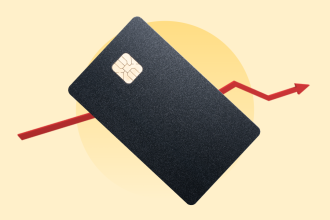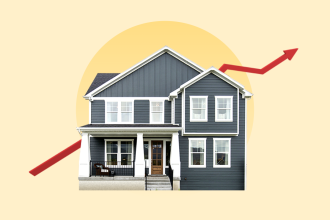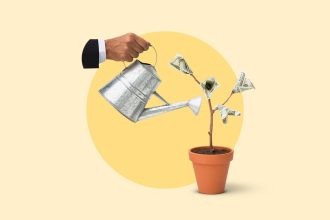Key takeaways
- Mortgage reserves refers to cash or other easily accessible assets you could use to make mortgage payments, above and beyond the down payment and closing costs.
- Reserves are measured in months. Six months of reserves on hand means six months’ worth of mortgage payments.
- Not all borrowers need to have reserves. It depends on your credit, finances and the type of property you’re buying.
If you’re like most borrowers who get a mortgage to buy a home, you’ll need a lot of cash on hand: to make an earnest money deposit and down payment, plus pay closing costs. In some cases, you might also need even more: something called cash or mortgage reserves. Your lender will require proof of these assets before it approves your application to borrow money.
What are mortgage reserves?
Reserves for a mortgage refer to cash or any other assets you can easily access to pay your loan. If your mortgage lender requires them, these reserves would be in addition to the cash you’d use for an earnest money deposit, down payment and closing costs.
You might not need reserves for your mortgage, however. It depends on your credit, finances, the type of property you’re buying with the loan and other factors. If your lender does require reserves, it’s because it wants to see a healthy amount of savings or other liquid assets that you can use to make mortgage payments as backup to your salary or wages.
Mortgage reserves are measured in months. If your lender requires four months worth of reserves, for example, you’d need the equivalent of four monthly mortgage payments either in savings or another easy-to-tap asset.
What assets are allowed as mortgage reserves?
While the cash in your checking or savings accounts usually qualifies as reserves, there are other types of assets that qualify as well. For a conventional loan, these include:
- Vested funds in retirement accounts, such as a 401(k) or Roth IRA
- Stocks, bonds, mutual funds and money market funds
- Certificates of deposit (CDs)
- Cash value of a vested life insurance policy
- Funds in a trust
For some types of loans, the mortgage lender can only count up to 60% of vested funds as qualifying reserves.
What assets aren’t allowed as mortgage reserves?
These types of assets generally don’t qualify as mortgage reserves for a conventional loan:
- Funds in an account that aren’t yet entirely vested
- Funds that can’t be accessed until retirement or accessed only in the event of job loss or death
- Unsecured loans (for example, personal loans)
- Money obtained through a cash-out refinance on the property
- Lender contributions
- Stock in an unlisted corporation
When do you need reserves for a mortgage?
Most borrowers don’t need a cash reserve for a mortgage unless they’re buying a certain type of property or their application could use a boost due to poor credit, a low down payment or a high debt-to-income (DTI) ratio. Homebuyers with a credit score below 700 who are making a down payment of less than 20 percent, for instance, might need to have six months in reserves.
Even homebuyers making a more substantial down payment might still need to have mortgage reserves if their credit score is in the 600s. In such cases, the lender might require enough reserves for mortgage payments for two to six months.
A self-employed borrower might also need to have reserves, especially if they don’t have steady paychecks or a regular income stream.
If you’re a real estate investor, you might need to have cash reserves mortgage lenders can see, as well — particularly if your repayment plans are based on income (rents or leases) generated by the property you’re borrowing against.
How much are mortgage reserves?
If you do need mortgage reserves, the amount you need typically varies by the type of loan you’re applying for and the kind of property you’re buying. Each lender sets its own standards, but these terms outlined by Colorado-based lender American Financing are typical:
| Conventional loan |
|
| FHA loan |
|
| VA loan |
|
| USDA loan |
| Primary residence | Up to 6 months |
| Second home | 2-4 months or more |
| Investment property | 6 months or more |
How to build your mortgage reserves
If your mortgage lender indicates you’ll need reserves and you don’t have much in the way of assets, you might need to take steps to build up your savings before you can successfully apply for a loan. Here are some tips:
1. Cut down on spending
Look at your budget to see if you can cut back spending. You can cancel some subscription-based services you don’t use a lot, for example, shop smarter at the grocery store or find a cheaper provider for your car insurance. Set those savings aside in an account you won’t be tempted to draw from, but one that’s easy to access when the time comes. This might be a separate checking or savings account from the one you use for bills or day-to-day spending.
2. Set aside a portion of income
Since your savings accounts qualify as reserve funds for a mortgage, you can augment these by putting aside some of your income in these accounts each month. Consider setting up automatic deposits to make it even easier to stash money away.
3. Consider a CD
If the interest rate on your savings account isn’t cutting it and you don’t plan on getting the mortgage right away, consider a certificate of deposit (CD). CDs are an acceptable reserve asset, and CD rates tend to be higher than savings account rates, giving you a better return.
4. Move into the money markets
Offered by banks and credit unions, a money market account (MMA) is a cross between a savings account and a checking account and tends to earn a more competitive rate of interest on your deposited funds. MMAs have lower yields than CDs, but they are also more liquid, allowing you to withdraw money via debit cards or checks.
A similar vehicle is a money market fund, a type of mutual fund offered by brokerages and investment companies that generates income from short-term securities, often at a better rate of return than savings accounts or MMAs. It too ranks as a low-risk investment (though it is not insured by the FDIC, as it’s not a bank account). Bear in mind that, while highly liquid, both MMAs and money market funds might require high minimums to open and. maintain the account.
5. Increase contributions to your retirement account
Mortgage reserves can also come from vested retirement funds. If you’re only contributing the minimum to your retirement accounts, consider an increase.
6. Save money from windfalls
If your job provides regular bonuses, you work on commission or typically get a sizable tax refund, make it a habit to set some or all of that money aside as cash reserves.
FAQ
-
For a mortgage borrower, there isn’t much difference between the terms “cash reserves” and “mortgage reserves.” Both refer to additional assets — cash or otherwise — that can be used to pay the loan.
-
How much you should have in mortgage reserves depends largely on the type of loan you’re getting and the property you’re financing. If you’re getting a conventional loan on an investment property, for example, you’ll need six months of reserves.
Even if your lender doesn’t require reserves, it’s smart to have short-term savings — you might need the money in an emergency, if you lose your job or to pay for unexpected home or car repairs.
-
To calculate mortgage reserves, simply multiply your monthly mortgage payment by the number of months your lender requires in reserves. For example, if your monthly mortgage payment is $1,800 and you need three months of reserves, you’d need a total of $5,400, either in cash or savings or other liquid assets.
Read the full article here
















